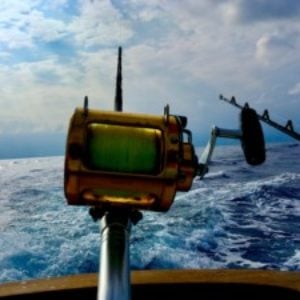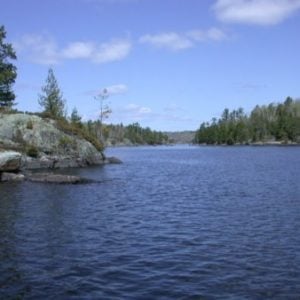I’ve been watching a group on Facebook and with some of the posts I’ve seen there it is pretty clear there is a very large discrepancy from person to person as to their own interperatation of what the rut is. So as a fun little post I thought I’d ask the group what the rut is to you (as in what sign to you signals the rut is on/off, things like that, pretty sure we all know what happens during the rut) amd see what kind of a range of answers we get. Not nessisarily calander dates, but if that’s what it is to you feel free to say that. I’ll withhold my thoughts on what the rut is as to not influence the answers till later.
IDO » Forums » Hunting Forums » Deer Hunting » The rut to you
The rut to you
-
 ClownColorInactiveThe Back 40Posts: 1955November 7, 2018 at 12:36 pm #1808305
ClownColorInactiveThe Back 40Posts: 1955November 7, 2018 at 12:36 pm #1808305To me the rut describes the whole period of the whitetail breeding cycle. From the early signs of bucks attempt to determine dominance pecking order to the recovery period after all breeding is finished.
The PHASES of the rut that I think work the best for my hunting are:
1. The chasing phase where bucks are aggressively competing for and chasing does that coming into heat and are aggressive toward other bucks. You may see multiple bucks in pursuit of one doe and there’s lots of activity as the doe is not receptive and may run bucks off. I think this is what most hunters will describe as “the rut” or “the peak of the rut” even though it actually is just one phase.
2. The “lock down” phase where bucks have isolated a doe in heat and are now breeding or staying chained to her until she is receptive to breeding and has been bred. This is where I’ve seen bucks get really silly-stupid and follow their hot doe into areas where they normally would never go.
3. The post rut aggressive feeding phase where bucks are attempting to quickly replace calories and body fat that was burned off during the earlier phases.
Grouse
November 7, 2018 at 12:44 pm #1808307To me the rut starts when the first doe goes into heat and ends when the majority of the does are bred. Obviously there are several stages of the rut and a “second rut”, but “the rut” to me is what I have described.
November 7, 2018 at 12:52 pm #1808310To me, there is multiple phases, I would simply define “the rut” as what is also called peak rut, majority of bucks searching with noses to the ground and or chasing does. Of course that would include lockdown and other stuff, but because not every doe in the woods is in heat at the same moment, not every buck can be locked down at the same time either. Right now, the rut is on in our woods.
November 7, 2018 at 6:48 pm #1808392So far sounds like we are all more or less in agreement. Personally I look at the rut as the general breeding season encompassing several phases, but ‘peak’, like sticker says, when and through the does substantially come into cycle. I feel like the pre-rut really could almost be broken into two or even three phases, the initial phase where you start seeing scrapes/rubs and the bucks begin establishing a pecking order yet movement, daytime in particular is still relatively subdued and not uncommon to see small and medium bucks still hanging together as remnants of their bachelor groups. Then the main pre- rut where bucks are hitting peak testotersone and daytime movement significantly increases and they become very intolerable of each other and stir crazy(this is my favorite time to hunt as they seem to be most vulnerable to calling). Could throw that initial harassing of doe groups in that, or maybe even call it a third phase of pre rut, you know those (typically smaller) bucks that start pushing some does around before they are really ready. Seems like every year I will hear someone talking about seeing this kind of chasing significantly early amd claim the its going to be early that year. Then you hit that peak chasing period where the does are starting to come in and every buck in the woods goes hog wild whether the doe in pursuit is ready or not. Then peak breeding, which for me is usually signalled by a significant drop in movement typically (and seems to lead to many hunters claiming the rut is off or over when really breeding is at its peak). Then that straggler phase or whatever you want to call it where they are in pursuit of the last does coming in and the uptick in movement returns. Typically after that point I’m either tagged out or burned out (usually the latter) so I’ve always just thrown everything else in the ‘post rut’ phase. Typically past most does being in and not yet to a second cycle by the end of WI gun season and the deer in our area are harrassed to the point it takes a long time to get anything resembling normal movement back anyway barring a major cold spell (oh so fun to sit in as well after spending 2 plus months fruitlessly chasing them).
I should footnote though that with the exception of the last 4 MN ‘A’ firearm seasons at my father in laws I have really only hunted on one 140 acre tract my entire career so my knowledge/opinion is very locally herd based.
November 8, 2018 at 6:21 am #1808462It can be pain in the arse,the Buck your hunting could be anywhere, you see different animals. All the action could be 200 yards away,and you would swear to god the woods are empty. For me pre rut is more predictable and enjoyable to hunt in. DK .
November 8, 2018 at 10:33 am #1808524Agreed Cat. That peak chasing can be fun to watch but oh so unpredictable and kind of a feast or famine timeframe.
 Tom SawvellInactivePosts: 9559November 13, 2018 at 8:48 am #1809589
Tom SawvellInactivePosts: 9559November 13, 2018 at 8:48 am #1809589I’m convinced that this “rut”, as its always referred to, is governed by the length of daylight. Plain and simple.
I’ll also offer this….
Deer with antlers will start rubbing as soon as the velvet begins to crack and peel. Initially I think they may rub to help get the strands of velvet out of the way of their vision. I think that hormone shifts occur that cause the velvet to mature to where it will peel off and hormones also signal the need to strengthen neck and forward body muscles for what lay ahead and that is why we see the trees and saplings get de-barked and tore to pieces. They may leave some scent in doing this rubbing but I don’t think it matters much. I don’t get too wrapped up in rubs but they are fun to see how huge of a tree a deer will lay into. This happens pre-rut. Two years ago I watched a big 6 point try to push over a poplar about 9″ in the trunk. Seeing the muscles in that guy’s body working was pretty awesome.
Scrapes are an entirely different animal are “in the rut” activities. Where my stand is at rubs can be seen everywhere. Scrapes may or may not be noticed from year to year, but when one or two are present about the only thing I do with regard to them is to put a tiny bit of eye gland extract on the licking branch. This is a neutral offering and simply lets any deer stopping there know that another has been this way and often times is calming. Way too often I see people trying to doctor a natural scrape only to alert the buck that made it. This year there were no scrapes in the area and I saw a total of three buck deer, all too small, pass thru the immediate stand area. I saw 4 different bucks, two shooters, pass thru a picked cornfield maybe three hundred yards away moving fast with their noses to the dirt.
Things change so much from one year to another that I don’t get all in a fluff over this rut stuff. I get in my stand and I wait. Sure I spend time in the area prior to the season and know where the activity is occurring but opening day can throw the whole nine yards into the wind. As mentioned, the activity might be at the other end of the ranch and you’d never know. And you might pass up a shooter waiting on that big fella you saw a week ago not knowing he was poked two hours after you saw him. For me where I hunt there are too many variables that can get tossed in the mix in a heartbeat, so I often have to make a decision to shoot or pass on a moments notice. Sometimes this rut stuff plays me a hand that ain’t so bad, but at the same time this rut stuff has stiffed me big time when I’ve allowed it to. What I know bout the rut is that I have to be in the woods with a wide open mind or my table will be empty that winter.
November 13, 2018 at 3:17 pm #1809684I used to jump around ,spot to spot, now I pick a few of my Best spots for the wind, and time of day. And just sit the hell out of them.
 Tom SawvellInactivePosts: 9559November 13, 2018 at 3:33 pm #1809696
Tom SawvellInactivePosts: 9559November 13, 2018 at 3:33 pm #1809696I’m in the tree at least 40 minutes before the sun is close to cracking the horizon and like to stay until dark. It is funny though that most all of the bucks I shoot are shot at early mid-day….10:30 AM to 2 PM.
I’m with catmando though. Get in the stand and stay there.
 blackbay
Posts: 699November 13, 2018 at 7:42 pm #1809747
blackbay
Posts: 699November 13, 2018 at 7:42 pm #1809747The rut starts when the FW says she got a sitter for the kids and we are going for dinner.
You must be logged in to reply to this topic.